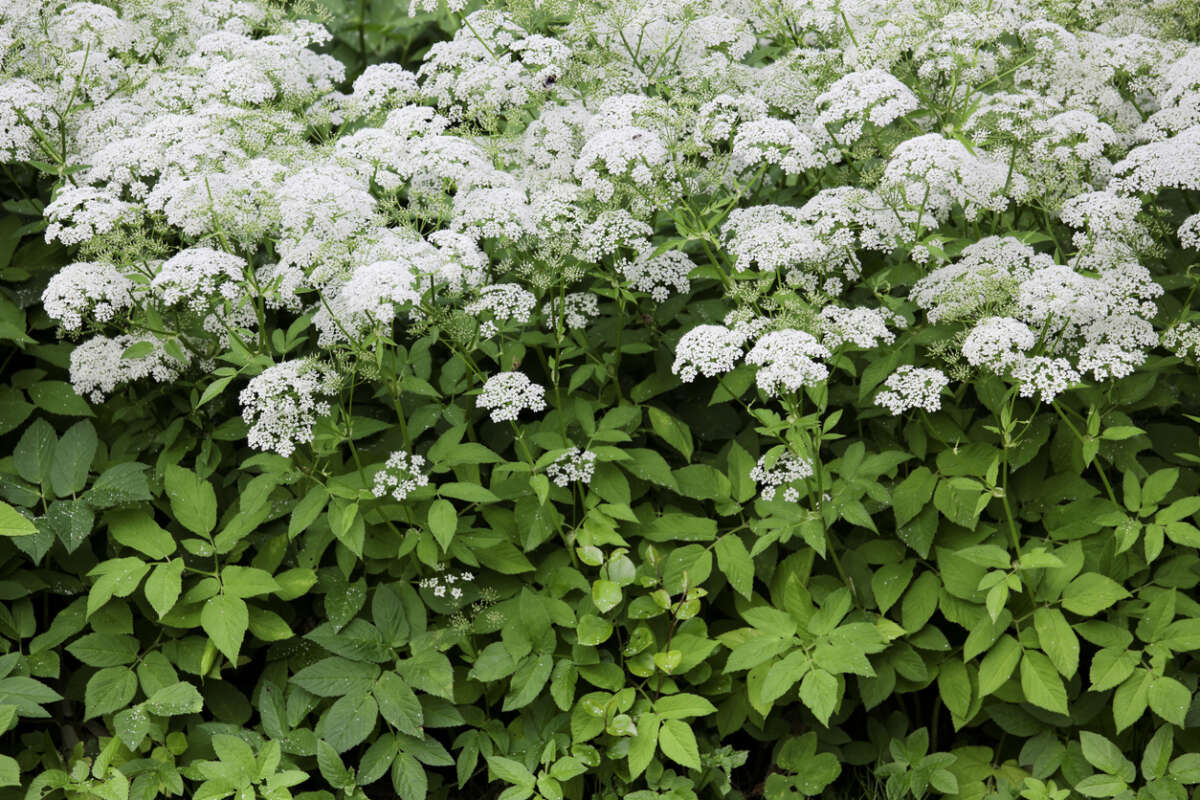Ground elder

Other names
bishop
Latin names
Aegopodium podagraria L.
Weed Type
Perennial Broad-leaved Weeds
Where would I find Ground elder?
In Europe it is a woodland plant. Ground elder was first recorded in Britain in 1578 but was known to be present in Roman times. It was probably introduced into the UK as a potherb and is often found naturalised near human habitation. It is now considered to be one of the worst garden weeds because it is so difficult to eradicate.
The crushed foliage and rhizomes of ground elder have a characteristic smell. An ornamental variegated form is available that is said not to be as invasive as the normal ground elder. However, it can spread equally as well as the normal form.
Biology
Ground elder flowers from May to July, sometimes into August. The fresh seeds require a period of chilling before they will germinate. Seed held in moist soil at 5°C germinated completely within 12 months.
All the stems except the flowering shoot remain below ground and it is the leaf stalk not the stem that emerges above ground. The far creeping rhizomes are white when young. Two to five rhizomes form at the base of each tuft of leaves. The shallow rhizomes have scale leaves at 4-5 cm intervals with a bud in each axil that has the potential to develop into a branched rhizome. Ground elder overwinters underground as dormant buds on the creeping rhizome.
Does Ground elder spread easily?
Ground elder will set seed if allowed to flower but vegetative spread is more important. The rhizomes can grow 15 to 90 cm per year. Rhizome fragments containing a node can readily develop into new plants. Fragments without a node form a callus that may produce adventitious buds after several months and these then grow to form new shoots. Fragments buried at 30, 60 and 90 cm deep in a sandy loam soil did not emerge above ground. However, the fragments produced shoot and leaf growth below the soil surface.
How to manage Ground elder organically
Although ground elder is not normally an arable weed it can encroach onto arable land where it should be hoed off frequently to exhaust the creeping rootstock. A bare fallow with repeated cultivations will be needed to deal with ground elder on a field scale. Liming may reduce the weed, draining may help on wet land, as may cleaning crops like potato.
In gardens the soil should be dug over and the rhizomes removed but a single cultivation will not suffice. Ground elder should be hoed off or dug out at every opportunity. Any rhizomes turned up during cultivation should be collected and burnt. Where it invades a planted area it may be necessary to dig out the desirable plants and clean off their roots to remove rhizome fragments. The soil-free plants should be potted up and observed to ensure no ground elder has been missed. The cleared bed can then be cultivated repeatedly to deal with the ground elder before replanting.